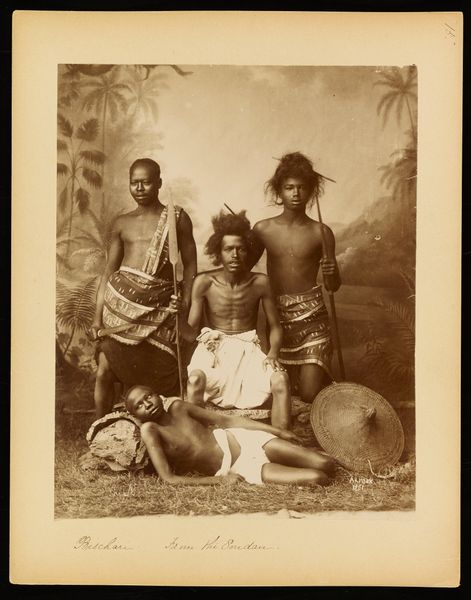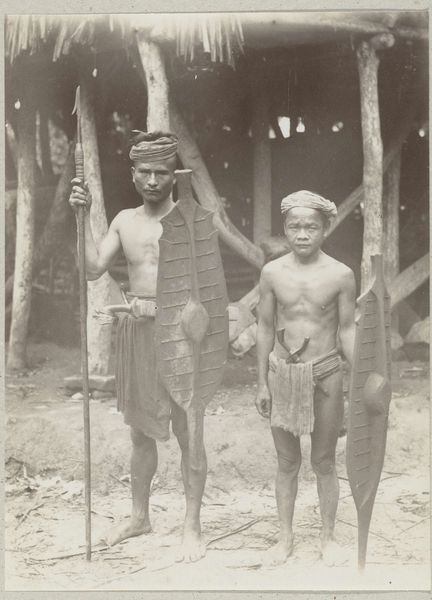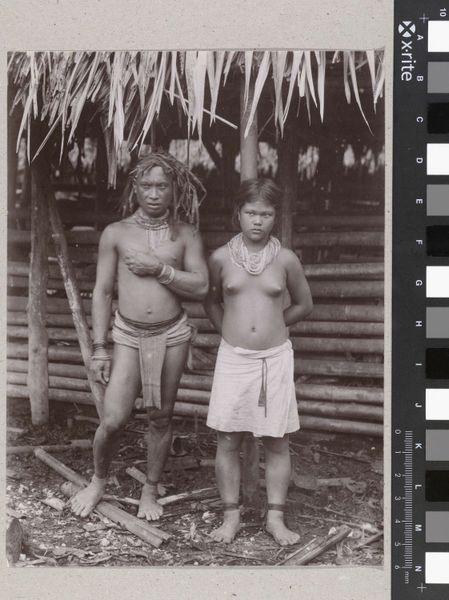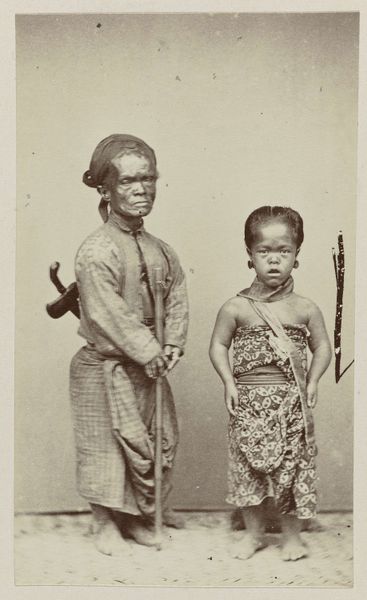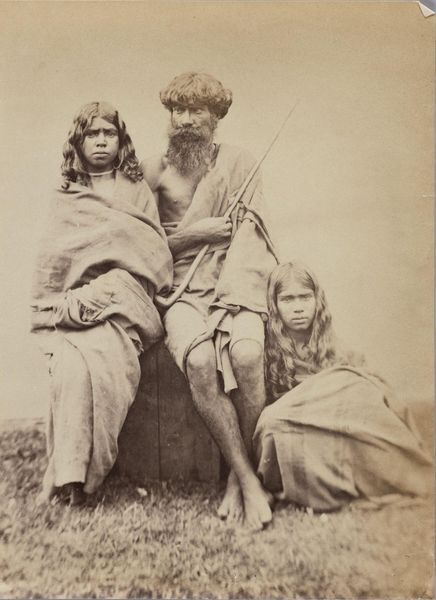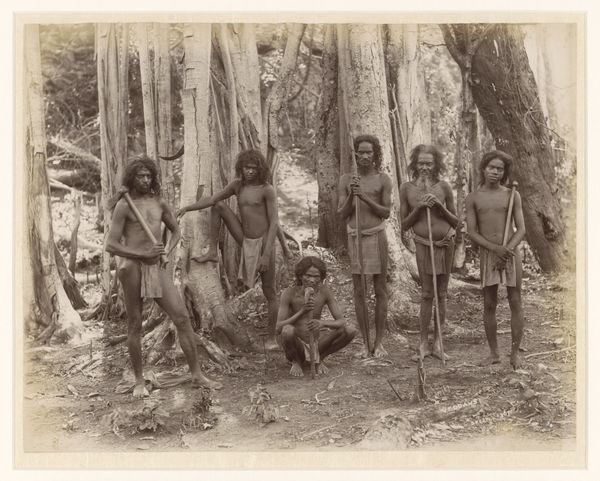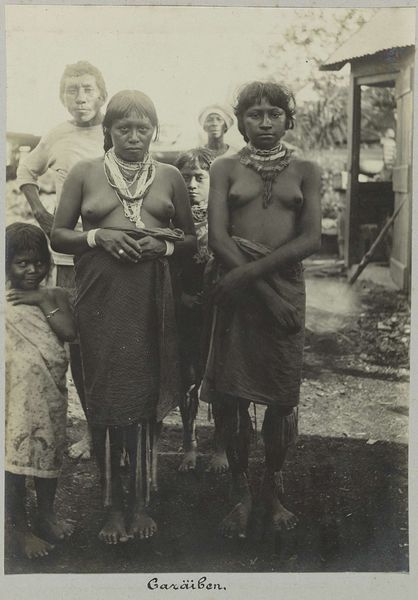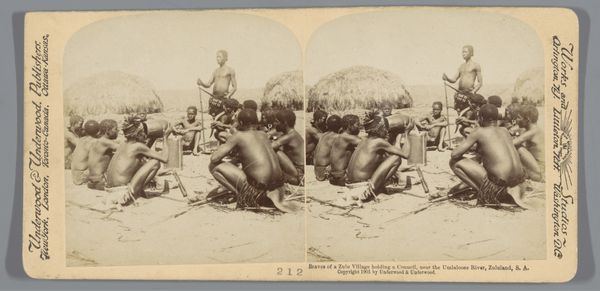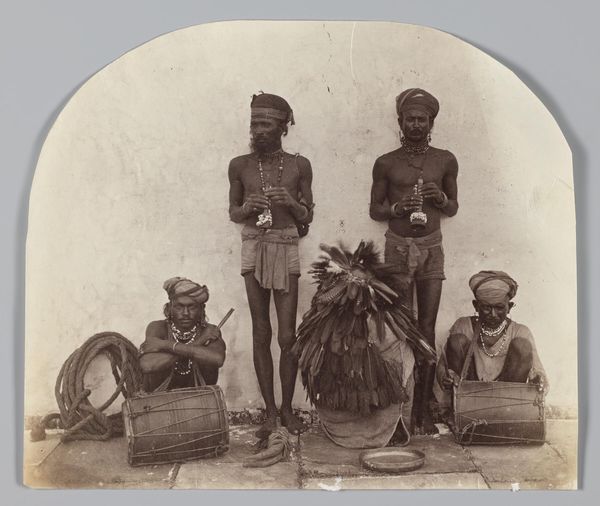
photography, gelatin-silver-print
#
portrait
#
african-art
#
archive photography
#
photography
#
historical photography
#
gelatin-silver-print
#
costume
Dimensions: height 190 mm, width 139 mm
Copyright: Rijks Museum: Open Domain
Editor: This gelatin silver print, titled “Pas getrouwd Zoeloe-stel,” which translates to "Newly Married Zulu Couple," dates roughly between 1880 and 1910. The subjects' direct gazes are really arresting; it has a very staged but intimate feeling. What stands out to you about it? Curator: It's crucial to recognize this image as more than a simple portrait. The staging, their attire… These elements likely served a specific purpose in the context of colonial representation. Consider who commissioned it, who distributed it, and to what audience. How might this image have been used to construct narratives about Zulu people during that era? Editor: So, it's not just a record, but a construction of an idea? The "newly married" tag feels...almost anthropological now. Curator: Exactly. The Western gaze often exoticized and objectified non-Western cultures, especially during the height of colonialism. How might this image participate in a power dynamic? Think about who holds the power to represent, and who is being represented. Does the image perpetuate stereotypes? Editor: I see your point. The elaborate clothing, for example—is it authentic or something put on for the camera, catering to European expectations? And labeling them "newly married" is maybe imposing a Western social structure onto a different culture? Curator: Precisely! These details were carefully chosen, likely to align with pre-conceived notions about African societies. The museum and galleries perpetuate this to some extent. Question the public role of art and image making, particularly colonial era art, especially photos such as these! Editor: Wow, I never thought about it that way. I will never view these photos quite the same way now. Curator: Understanding the historical context and power dynamics at play allows us to critically examine these images, rather than passively accepting them. The politics of imagery!
Comments
No comments
Be the first to comment and join the conversation on the ultimate creative platform.

